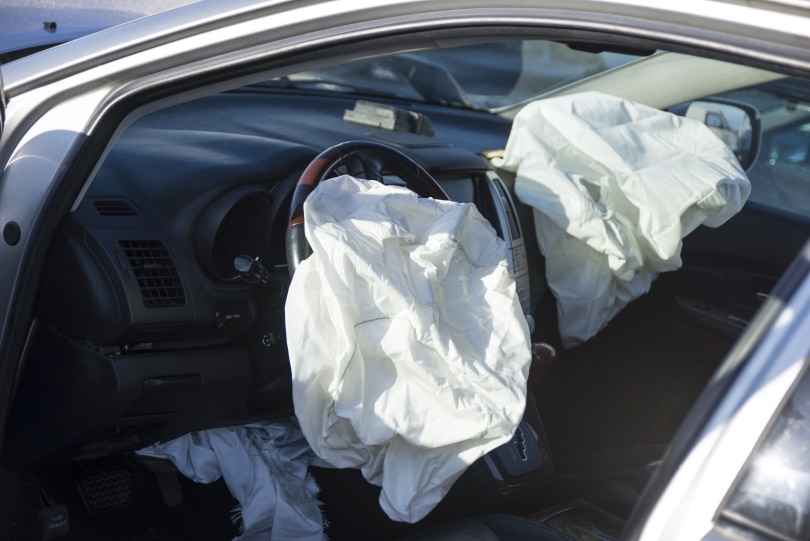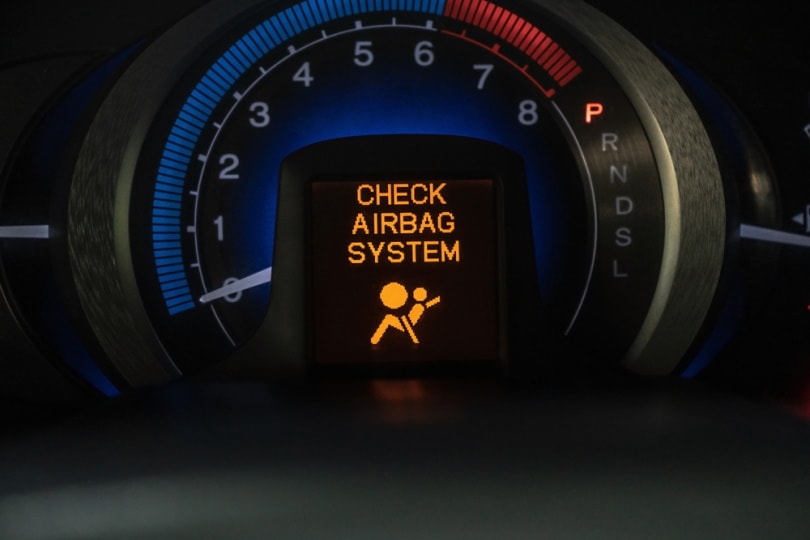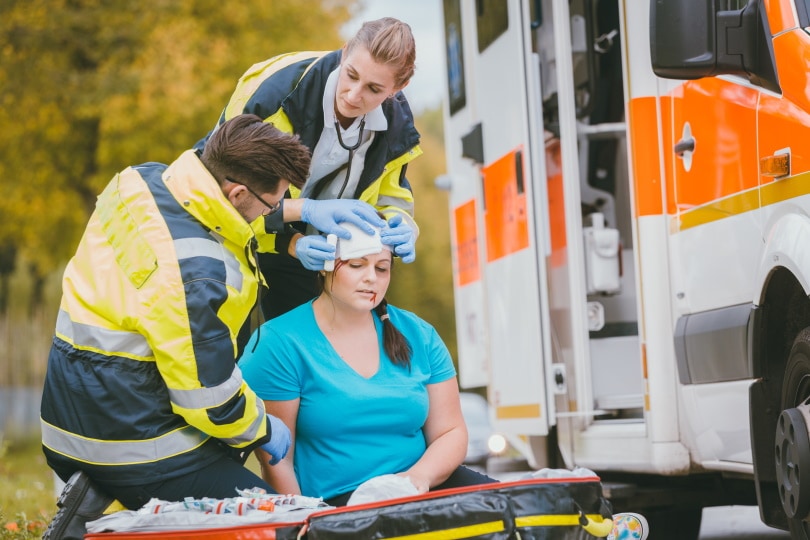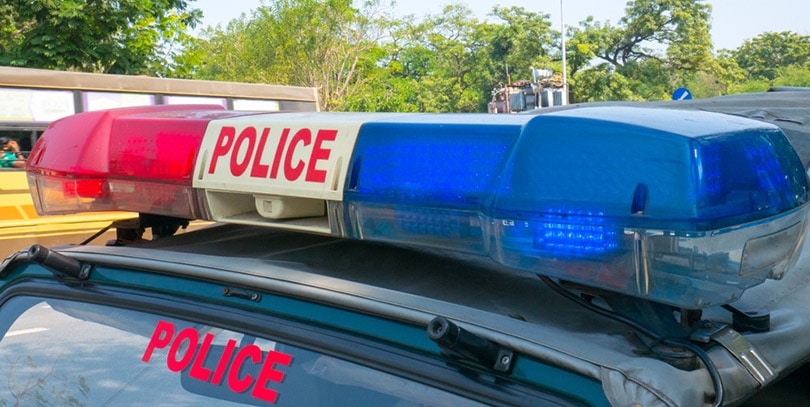If My Airbags Deploy, Is the Car Totaled? Facts & FAQ
-
Pete Ortiz
- Last updated:

In discussions related to car accidents and collisions, we often hear seat belts being the center of safety precaution advice and life-saving stories. However, when it comes to head-on and side collisions, airbags are responsible for reducing a large number of serious injuries and fatalities on the road each year. Cars manufactured in the United States in the 90s or later are typically equipped with airbags in the steering wheel and glove compartment.
And depending on the make of the vehicle, the car will also have side and backseat airbags. If you have an accident and your airbags deploy you may be wondering whether the car will be considered totaled and how the insurance coverage of the accident will play out. Does airbag deployment mean a car’s totaled? Not necessarily. We have researched this topic and we’ll discuss it in this article.
 Does Airbag Deployment Equal Totaled?
Does Airbag Deployment Equal Totaled?
The truth is this really depends on the state that you live in and what they define as a vehicle being totaled. “Totaled” means that your vehicle is beyond repair and that the cost of fixing it severely outweighs its current value.
It’s not a declaration directly defined by whether the airbag deploys. Whether or not a vehicle is considered “totaled”, or a “total loss” will depend on how much damage it has overall. So, to say, new and expensive or luxury vehicles will require a significant amount of damage before they are considered totaled. In many cases, insurance companies will consider a vehicle totaled when it has been damaged anywhere from 60% to 75%.
Airbags are designed to go off in collisions that are moderate to severe, because they may actually cause injuries to the drivers and passengers when they deploy due to the sheer force of their deployment.
So, for example, if a driver crashes into a tree at 5 mph, chances are that the airbag will not deploy. However, if the same vehicle crashes into a tree going 40 miles an hour, the airbag will likely deploy, as there is a great chance for the driver to face bodily injury upon impact.

How Do Most Airbags Deploy?
You may be surprised to find that airbags don’t just deploy in the event of an extreme head-on or side collision. They can also deploy in minor and moderate collisions as well. Every manufacturer has a different airbag sensory system that will determine whether the bag will deploy. When an electronic signal to the airbag system is received, airbags will deploy.
Upon deployment, instant inflation occurs as the airbag is filled with non-hazardous gases within fractions of a second. It’s this instant inflation that can save drivers’ lives, though it can also cause injury. Because there is less distance between drivers and the car’s side, side airbags are more likely to deploy faster than frontal ones.
Although front airbags are slower to deploy, they are still the primary defense system–because chances are that drivers are more likely to be in a head-on collision than one from the side (aka “T-bone collisions”). This is also why children under 13 years old are always advised by driving and public safety experts to sit in the back of a vehicle, as opposed to the front passenger seat.
How Much Does It Cost to Get an Airbag Replaced?
Even though airbag deployment doesn’t necessarily mean that a car will be considered a total loss by an insurer, it does add to the cost of getting the car replaced. And it’s important to note that airbag replacement is anything from cheap. On average, your typical airbag replacement can cost anywhere from $1,000 to over $6,000, depending on the make, model, and age of the vehicle.
Do You Have to Replace Your Deployed Airbags?
Yes. After deployment, airbags cannot be reused but can be replaced. It’s important to replace your airbags if your vehicle was damaged in a collision. And in many cases with severe accidents, you won’t be able to effectively steer the vehicle if the airbag on the driver’s side has been deployed.
You will also increase your risk of sustaining fatal injuries by 25-30% by having deployed airbags and unusable airbags in your vehicle. It’s also illegal to reinstall or modify any airbags in a vehicle in many states. Your insurance provider will typically require you to have the airbags replaced as well as part of your settlement during the vehicle repair.
The 5 Steps to Take When Air Airbag Deploys
If you’ve never had an airbag deployed after a collision, you may be confused about what to do next. Airbag deployment can be a very scary thing, whether you’re in a major collision or a minor one that causes the airbag to deploy. So here are a few quick checks to perform if should you ever find yourself in this situation:
1. Check Your Body for Injuries

The first thing that you should do if your airbag deploys is to check yourself for any physical injuries. Sometimes the deployment of the airbag could be so shocking, that you may be spiraling from adrenaline and unaware that you have sustained physical injuries.
Next, take a look around to make sure any other passengers in the car with you are okay. If anyone needs medical attention, it’s best to call 911 so they can be taken to the hospital and treated on the spot for minor injuries by EMTs. Seek medical attention, but do not continue to drive the vehicle.
2. Turn the Car Completely Off
The next thing you want to do is to turn the car completely off. You may not think of this at the moment, but it is important to shut the vehicle’s engines down, as additional airbags can deploy after the fact. You should also exit the vehicle as soon as possible.
In most cases and vehicles, the sensor system will shut down the engine all on its own once the airbags are deployed. This is to protect against possible explosions or fires caused by oil leaks at the gas tank or from the engine. If you’re in a high-traffic area, be sure to use precautions when exiting the vehicle–especially during nighttime.
3. Evaluate the Vehicle

After you have addressed your personal wellbeing and that of your occupants, try to do a check of the damage to the vehicle and take any pictures if you can. However, if you are injured or feeling light-headed and anyway, it’s best to take a seat in a safe place away from traffic.
4. Call the Police
Next, you should call the police to provide them with all details of the accident. After contacting them you should contact your insurance company to provide all details about the accident and the current condition of your vehicle. They will help you begin the claims process to get your vehicle fixed or replaced.
The faster you contact your car insurance provider, the better. The claims process can be a long and exhausting one depending on whether you are the only driver in an accident and the extent and severity of the collision.
5. Wait for the Police

Once the police arrive, they will assess the situation and write up a report for you. They should provide you with a copy of the report which you’ll need when you follow up with your insurance company.
Watch the police officers give you the okay to leave the scene, you should reach out to your insurance company and have them send a tow truck for your vehicle if they haven’t already.
The tow truck company will take the vehicle to your preferred car repair shop or to your residence. In most cases, it’s best to have the car towed to your residence (given it’s not totaled), as your insurance provider may have stipulations regarding where you can get the vehicle repaired and whether it’s repairable.
 Final TThoughts
Final TThoughts
Having an airbag deployed during an accident can be a very scary thing, though they are life-saving devices. Just because your airbag deployed after a collision doesn’t necessarily mean that your car will be considered totaled by your insurance. Insurers assess the total damage to a vehicle to determine whether it is worth repairing, for the vehicles that have sustained damage at least 60% or more normally fit the bill for a “totaled” status.
Featured Image Credit: Maksim Vivtsaruk, Shutterstock
Contents

 Does Airbag Deployment Equal Totaled?
Does Airbag Deployment Equal Totaled?